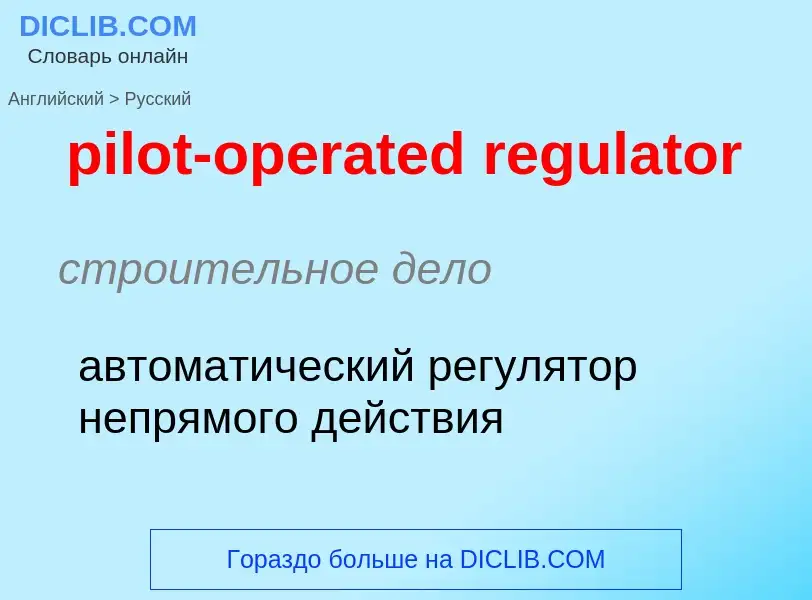Vertaling en analyse van woorden door kunstmatige intelligentie ChatGPT
Op deze pagina kunt u een gedetailleerde analyse krijgen van een woord of zin, geproduceerd met behulp van de beste kunstmatige intelligentietechnologie tot nu toe:
- hoe het woord wordt gebruikt
- gebruiksfrequentie
- het wordt vaker gebruikt in mondelinge of schriftelijke toespraken
- opties voor woordvertaling
- Gebruiksvoorbeelden (meerdere zinnen met vertaling)
- etymologie
pilot-operated regulator - vertaling naar russisch
строительное дело
автоматический регулятор непрямого действия
Definitie
Wikipedia
In mathematics, Dirichlet's unit theorem is a basic result in algebraic number theory due to Peter Gustav Lejeune Dirichlet. It determines the rank of the group of units in the ring OK of algebraic integers of a number field K. The regulator is a positive real number that determines how "dense" the units are.
The statement is that the group of units is finitely generated and has rank (maximal number of multiplicatively independent elements) equal to
where r1 is the number of real embeddings and r2 the number of conjugate pairs of complex embeddings of K. This characterisation of r1 and r2 is based on the idea that there will be as many ways to embed K in the complex number field as the degree ; these will either be into the real numbers, or pairs of embeddings related by complex conjugation, so that
Note that if K is Galois over then either r1 = 0 or r2 = 0.
Other ways of determining r1 and r2 are
- use the primitive element theorem to write , and then r1 is the number of conjugates of α that are real, 2r2 the number that are complex; in other words, if f is the minimal polynomial of α over , then r1 is the number of real roots and 2r2 is the number of non-real complex roots of f (which come in complex conjugate pairs);
- write the tensor product of fields as a product of fields, there being r1 copies of and r2 copies of .
As an example, if K is a quadratic field, the rank is 1 if it is a real quadratic field, and 0 if an imaginary quadratic field. The theory for real quadratic fields is essentially the theory of Pell's equation.
The rank is positive for all number fields besides and imaginary quadratic fields, which have rank 0. The 'size' of the units is measured in general by a determinant called the regulator. In principle a basis for the units can be effectively computed; in practice the calculations are quite involved when n is large.
The torsion in the group of units is the set of all roots of unity of K, which form a finite cyclic group. For a number field with at least one real embedding the torsion must therefore be only {1,−1}. There are number fields, for example most imaginary quadratic fields, having no real embeddings which also have {1,−1} for the torsion of its unit group.
Totally real fields are special with respect to units. If L/K is a finite extension of number fields with degree greater than 1 and the units groups for the integers of L and K have the same rank then K is totally real and L is a totally complex quadratic extension. The converse holds too. (An example is K equal to the rationals and L equal to an imaginary quadratic field; both have unit rank 0.)
The theorem not only applies to the maximal order OK but to any order O ⊂ OK.
There is a generalisation of the unit theorem by Helmut Hasse (and later Claude Chevalley) to describe the structure of the group of S-units, determining the rank of the unit group in localizations of rings of integers. Also, the Galois module structure of has been determined.

